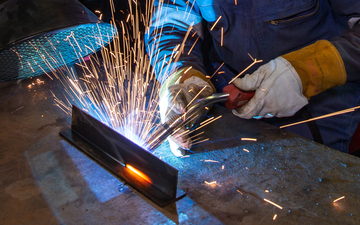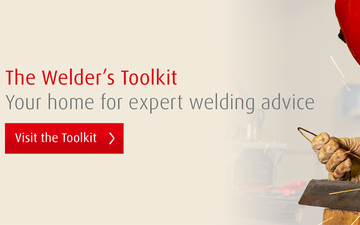- Official BOC UK Online | Industrial Gases | Products & Solutions | BOConline UK
-
Shop
- Industries
- Processes
- Gases & Equipment
-
Solutions
-
Services
-
Health & Safety
-
Contact & Support
- What's Happening
-
Net Zero Strategies
The Efficiency Series: How to Choose the Right Shielding Gas and Flow Rate
Posted by BOC

As inflation affects materials costs and energy prices soar, most businesses are thinking about ways to reduce waste and improve their productivity.
In the Efficiency Series, we’ll be taking a close look at some of the welding variables that can impact on your profitability, starting with your shielding gases and flow rate.
What difference can your choice of shielding gases make?
Are you using the most effective shielding gas for your job? For example, most TIG welders will automatically choose Argon – it’s an excellent all-rounder – but far better results can usually be achieved when welding specific materials by choosing a mixed gas.
When margins are tight, it’s worth investigating whether there’s a shielding gas that is better suited to your weld type and materials. Get it right, and your welding throughput can increase, your defects and re-works can reduce, and your overall weld quality can improve.
What are your options?
There are many gases available which can improve your welds.
For example, adding the right amount of hydrogen to argon for TIG welding stainless steel concentrates the arc, which produces a narrower, more deeply penetrating weld profile with greatly increased fusion. In addition, the weld pool is more fluid, which allows any trapped gases to escape and usually results in improved deposition rates. The addition of hydrogen also reduces oxide formation on the weld surface.
Increased welding speeds show the following benefits:
- reduced heat input, which results in less distortion and weld surface oxidation, meaning less post-weld re-working and cleaning
- increased profitability per component
- reduced overall manufacturing costs
- potential for increased throughput.
The three key benefits of more efficient shielding gases
- Increased heat and fluidity of your weld pool. Using the right shielding gas can improve the transfer of energy from the arc to the weld. This means a higher quality weld, with fewer defects.
- Better productivity. The correct gas mix delivers quicker weld speeds and better deposition rates. It also produces less spatter, meaning less cleaning up and an improved finish.
- Improved quality. The right shielding gas will improve virtually every aspect of your weld – including penetration profile, weld bead shape and size, and weld integrity.
The impact of gas flow rate
Getting your shielding gas right is only half the equation – without the correct flow rate, you could find yourself wasting money on excess gas usage, or costly weld re-works.
If your flow rate is wrong (either too high or too low) you can draw atmospheric contamination into your welds, which can adversely affect the parent material, cause porosity, allow surface oxide formation and generate excessive spatter.
A pea shooter type flow indicator is generally the most accurate way to get your flow rate right.
Checking for leaks
All equipment should be checked for gas leaks on a regular basis. Adjust your regulator to the correct working pressure, then, using leak detection fluid (which you can get hold of at your local Gas & Gear store or buy online), spray your connection joints.
If the fluid bubbles, you’ve found a leak. Turn your cylinder off, ensure your gas hose is purged of pressure, then retighten the leaking joint. Open the cylinder valve and re-test. If the leak persists, further investigation of the gas delivery equipment is required.
If you are interested in a more efficient shielding gas, or have questions about your gas flow rate, speak to your local Gas & Gear store, or contact us via Live Chat.

